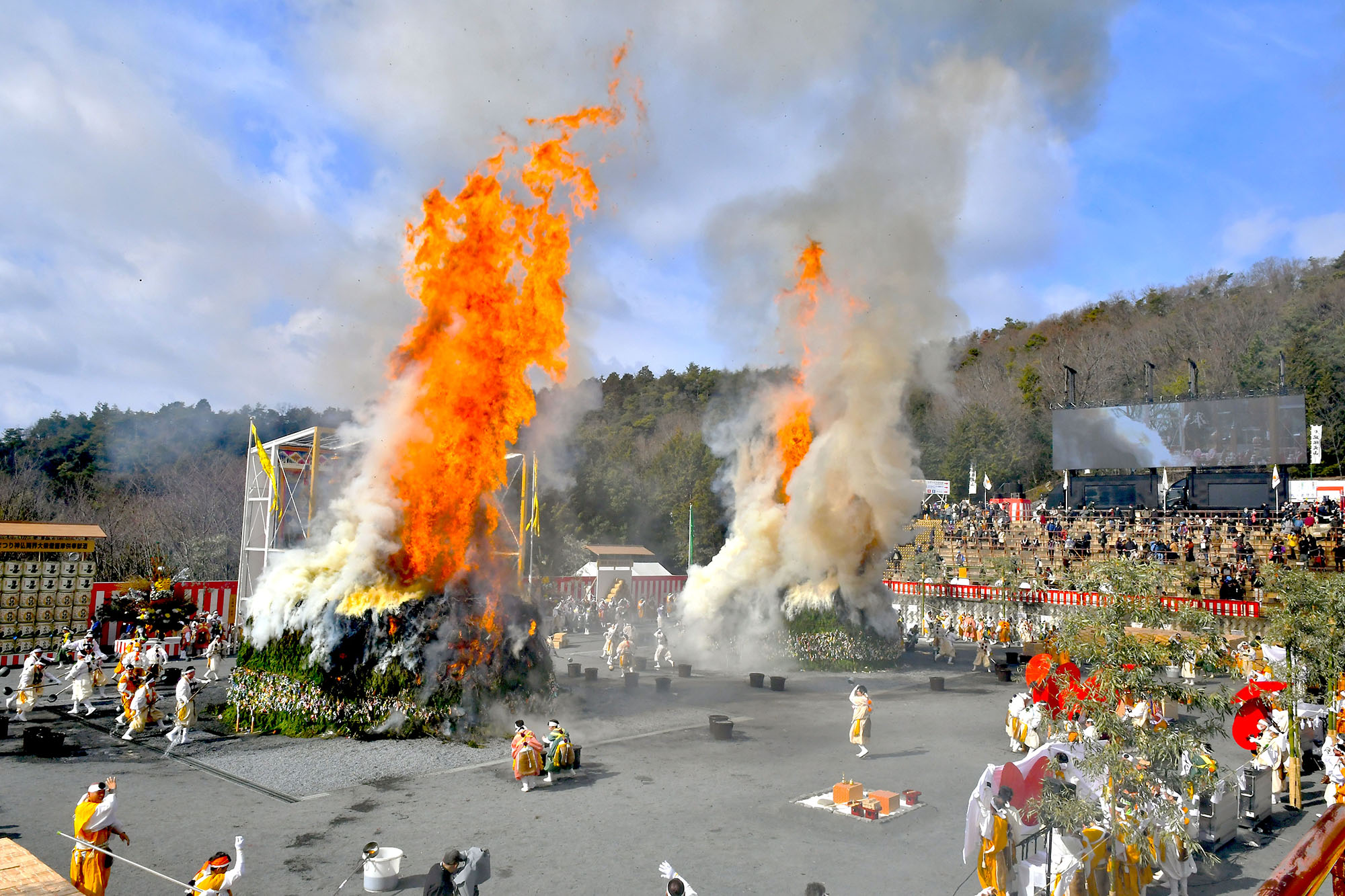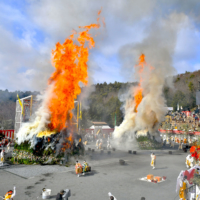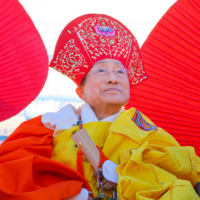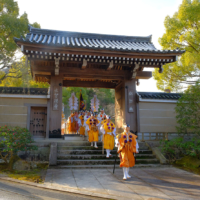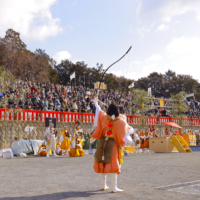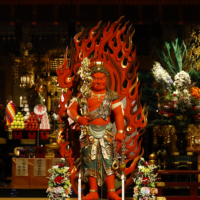Religious rituals are a time-honored way of finding calm and certainty in an unstable, changing world. Never has that been more true than today, when war, the climate crisis and ever-faster technological change threaten our very existence.
Which is why tens of thousands of people make the trek through the wooded hills east of Kyoto each year to celebrate the Agon Shu Fire Rites Festival. Although the festival and its rituals are a source of stability and calm in our confusing and chaotic world, at its heart is Buddha’s message of the impermanent nature of existence. But as anyone who has studied Buddhism knows, the enlightened one’s message is itself a reassuring form of spiritual certainty.
The 51st edition of the festival was held on Feb. 11, and was attended by a large number of people. It’s the biggest of all the festivals Agon Shu holds worldwide and never fails to impress first-timers as well as veterans of the event.
Personal destiny
The festival’s formal English name is the Stars and Fire Rites Festival. “Stars” refers to the star of destiny that governs the joys and woes we encounter during our earthly existence. The Agon Shu faithful believe that the festival’s combined Buddhist and Shinto rituals can help improve one’s personal destiny.
This year’s festival was held in the aftermath of the powerful earthquake that devastated the Noto Peninsula on New Year’s Day. The Agon Shu faithful offered heartfelt prayers for victims of the disaster and prayed that those living along the Pacific coast will be spared the worst effects of the feared Nankai Trough earthquake projected to strike off Japan’s southeast.
The late Rev. Seiyu Kiriyama founded Agon Shu in 1978. His search for spiritual truth led him to the original Buddhist scriptures known as the Agama Sutras. For the Agon Shu faithful, the Lord Buddha is the ultimate object of worship. The two other pillars of Agon Shu’s doctrine are the dharma — the Buddha’s teachings and training methods — and the community of believers known as the sangha.
Agon Shu draws on elements from Mahayana, Theravada and esoteric (especially Bhutanese) Buddhism, as well as spiritual traditions such as Japan’s indigenous Shinto religion and Taoism from China. Agon Shu is now a community of Buddhism with seven branches in Japan.
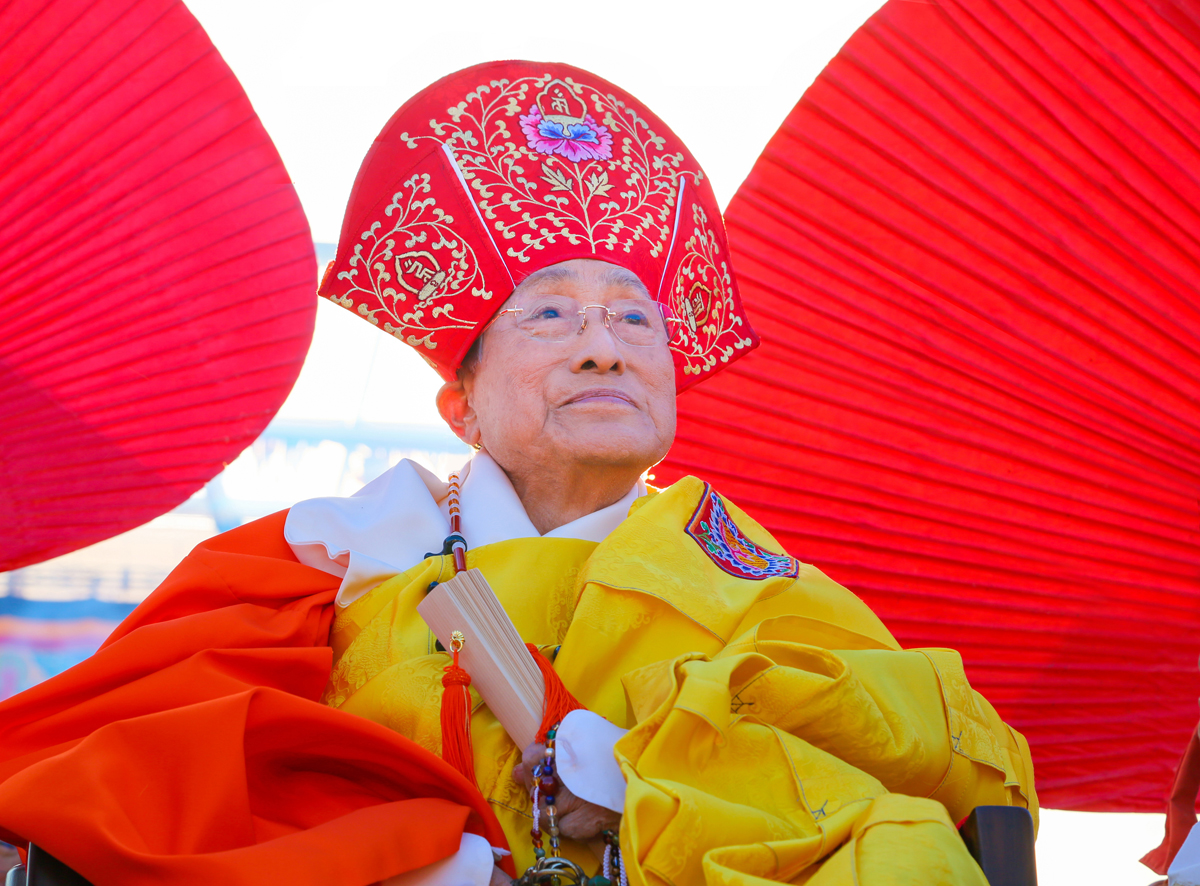
Procession of priests
As always, the Fire Rites Festival began with a procession of Agon Shu faithful dressed as yamabushi (mountain priests) wending their way along a path through the woods of eastern Kyoto toward the organization’s amphitheater to the sound of a majestic symphony composed especially for the festival by late Japanese composer Toshiro Mayuzumi. It’s a stirring sight.
On entering the amphitheater, the yamabushi lined up in serried ranks in front of the elaborately decorated altar that dominates the rectangular space. In the middle sat two large gomadan (pyres) that were ignited later in the morning — the shinkaidan for the prayers, requests and desires of the living, and the bukkaidan for the liberation of the spirits of the departed.
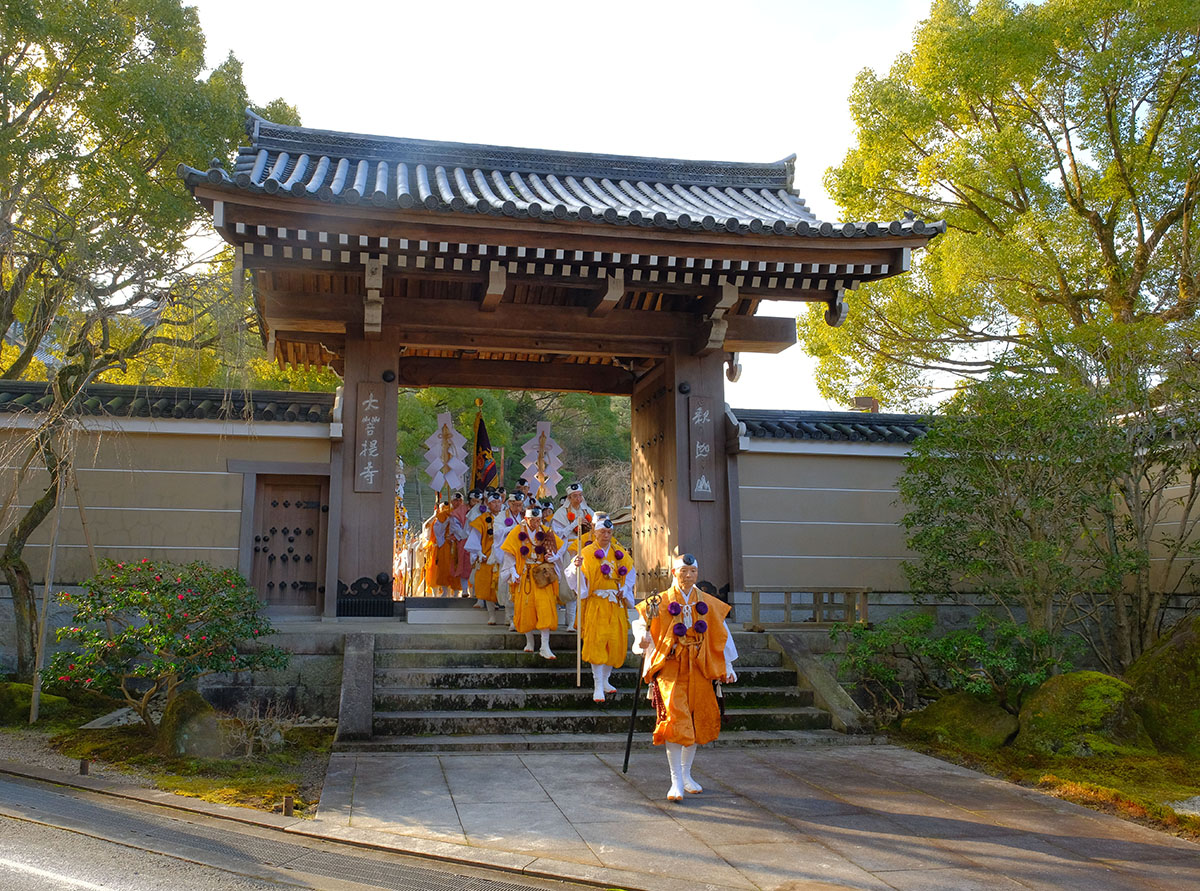
Reverent calm
A series of rituals were then performed to purify and sanctify the site. Setting a tone of reverent calm, three dancers wearing beautiful court costumes performed a stately dance to the otherworldly sound of composer Hideki Togi’s updated version of gagaku (imperial court music). For a moment the audience was transported back to the Heian Period (794 to 1185).
Four men carrying long-handled axes then performed a ritual to purify and cultivate the land for prayer, slashing boldly through their air with their axes. They were followed by female yamabushi shooting arrows to exorcise evil spirits from the venue. Next was a question-and-answer exchange concerning Buddhist and Shugendo doctrines.
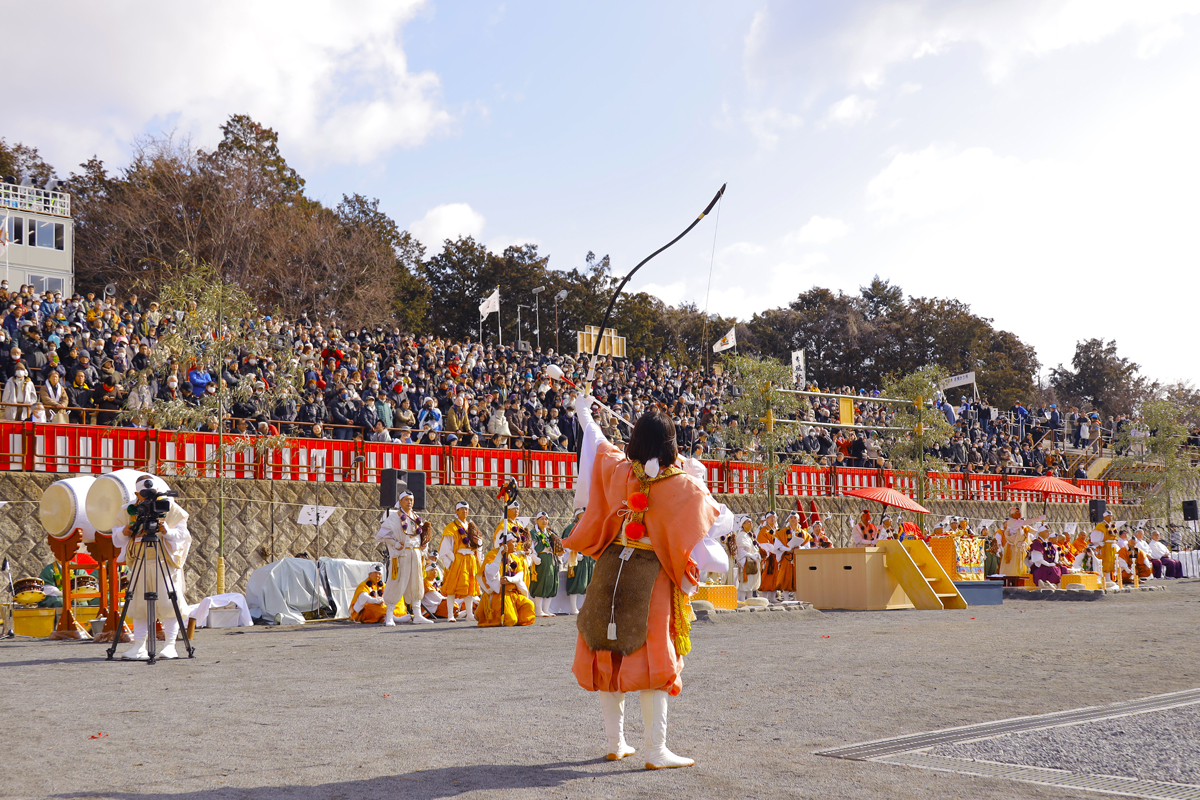
Sense of anticipation
Then came the moment everyone had been waiting for: the lighting of the bonfires. The sense of anticipation was palpable as attendants placed four lit torches at the base of the pyres, which soon produced massive columns of gray smoke spiraling into the sky. Bright orange flames soon burst out of the pyres, and the temperature in the amphitheater rose appreciably. The blaze was especially powerful this year, but as always, Kyoto Fire Department personnel were on hand to ensure safety.
Attendants then began the daylong process of throwing the millions of gomagi (prayer sticks) bearing believers’ handwritten prayers, including for world peace, health, prosperity and protection against natural disasters, into the pyres. A total of 18 million gomagi were burned in this year’s festival.
The two bonfires burn through the day as devotees chant sutras to the steady beat of taiko drums. Dozens of volunteers bundle and box prayer sticks before carrying them to the bonfires and throwing them into the flames. Others keep a close eye on the flames and periodically douse the pyre with water to keep the fire under control.
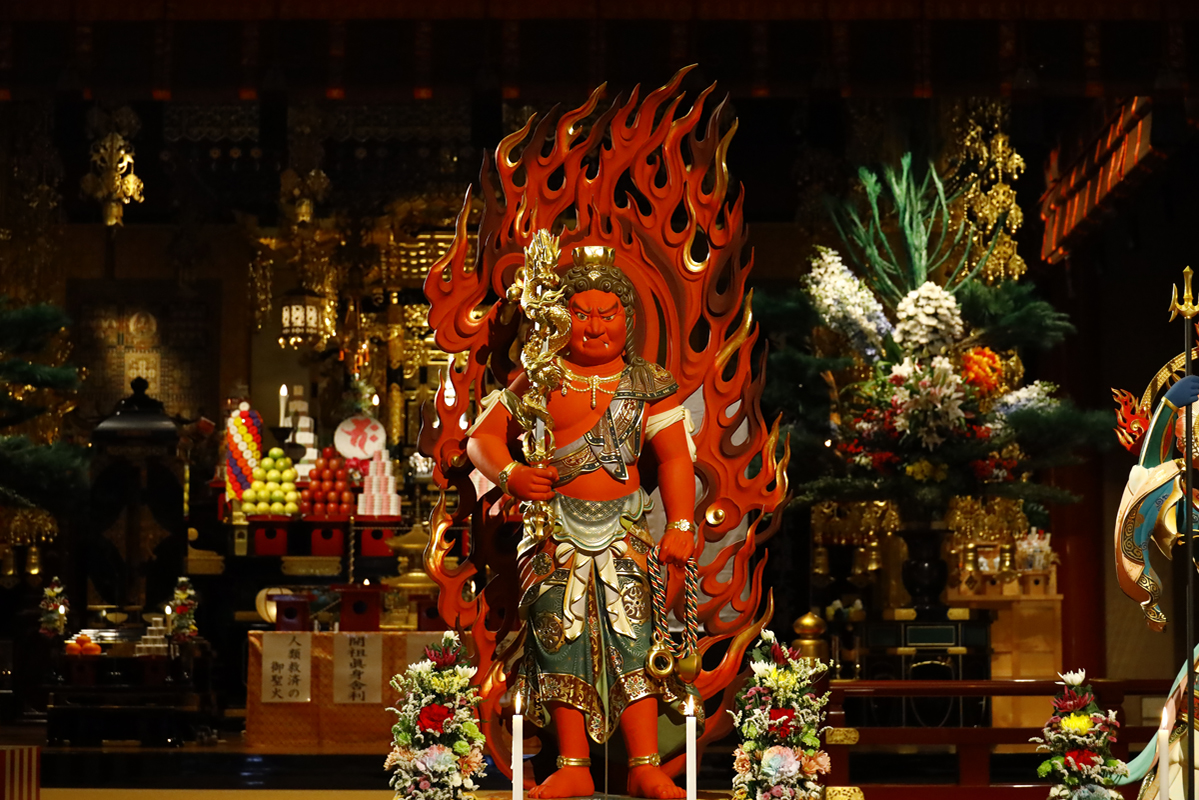
Carnival atmosphere
The Fire Rites Festival has a serious purpose, but it also has a fun, carnival-like atmosphere, with attendants calling on people to purchase gomagi, souvenirs and religious articles. The festive mood is especially apparent at a small stage where people dressed in colorful costumes dance in front of an Agon Shu member dressed as Daikoku, the god of wealth.
New attendees and veterans both said they enjoyed the event.
“I’m very happy to be back in Japan,” said Somasiri Addara Pathiranage, the director-general, chief organizer and treasurer of the Sri Lanka Agon Shu Friendship Foundation. “This is my 30th Hoshi Matsuri,” he said, using the Japanese name for the event. “I am very grateful for this chance to pray for world peace.”
“I don’t know much about this event,” said first-timer Galina Komarova, a Russian woman residing in Japan. “This is a good chance to study the doctrines of Agon Shu.”
“My impression of the event is that it’s very impressive and very traditional,” said Crestean Noscare, a visitor from Italy.
“I am very interested in Japanese culture, in wabi-sabi (austere beauty),’” said visiting French photographer Alain Willaume, stressing the continuity between the past and present in Japanese culture. He is trying to capture that in his photography, and the Fire Rites Festival provided him with a rich opportunity in that regard. “I had no knowledge of the Hoshi Matsuri,” he said. “I want to take it all in.”
https://www.agon.org/hoshimatsuri/e/
Download the PDF of this article



